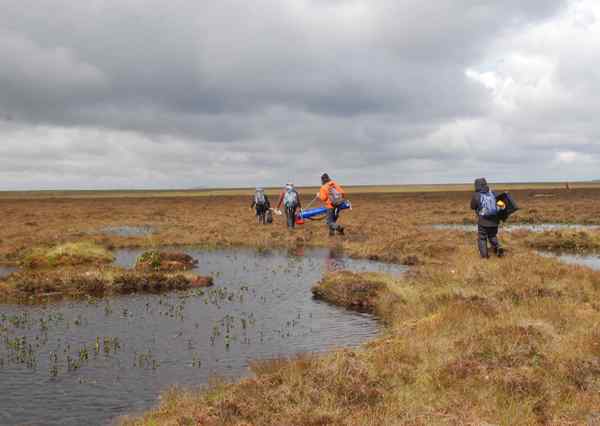Images of climate innovation
Molecular peat doctors
A vast open land scattered by pools sprouting with bogbean, this peatland in the far north of Scotland is one of many under restoration in the UK. Healthy peatlands store carbon due to the presence of certain molecules within the peat itself. Dr Nicholle Bell and her team at the University of Edinburgh perform molecular health checks using powerful analytical chemistry methods to find out if restoration is bringing these vital carbon stores back to good health.

Healthy peatlands are vital carbon stores; UK's peatland alone holds more than twice the carbon as much as forests. However, over 80% of UK peatlands are damaged, and net-zero carbon targets cannot be met if they are not restored.
The cost of peatland restoration is estimated at £8-22 billion but will bring benefits worth five to ten times that in reduced carbon emissions alone. Restoration of damaged peatlands is a nature-based solution to both the climate crisis and biodiversity loss. Monitoring the success of restoration is, therefore, key to protecting large-scale investments and ensuring the return to good peatland health is sustainable against future threats.
It is believed that healthy peatlands act as carbon stores due to the presence of specific molecules within the peat itself. This 'molecular army' switches off the mechanisms that would otherwise break the peat down to CO2. The question is, when a damaged peatland is restored, does the army come back. This is not an easy question to answer as peat contains thousands of molecules in what could be described as Earth's most complex mixture.
To assess whether restoration is working, our team at the University of Edinburgh performs peatland molecular health checks using powerful analytical chemistry methods that are able to detect the thousands of molecules that make up peat. At the same time, we are developing an innovative method using tea bags as a simpler proxy for monitoring the molecular changes in peat. Teabags are buried for a few months, recovered, and sent to the lab for analysis.
The aim is to provide a tool that conservation bodies and others can use to monitor the health status of peatlands in a non-invasive way. By conducting molecular health checks, we hope to safeguard our peatlands so they can play their key role in the global fight against climate change.
Entrant: Nicholle Bell , University of Edinburgh
Copyright: Nicholle Bell